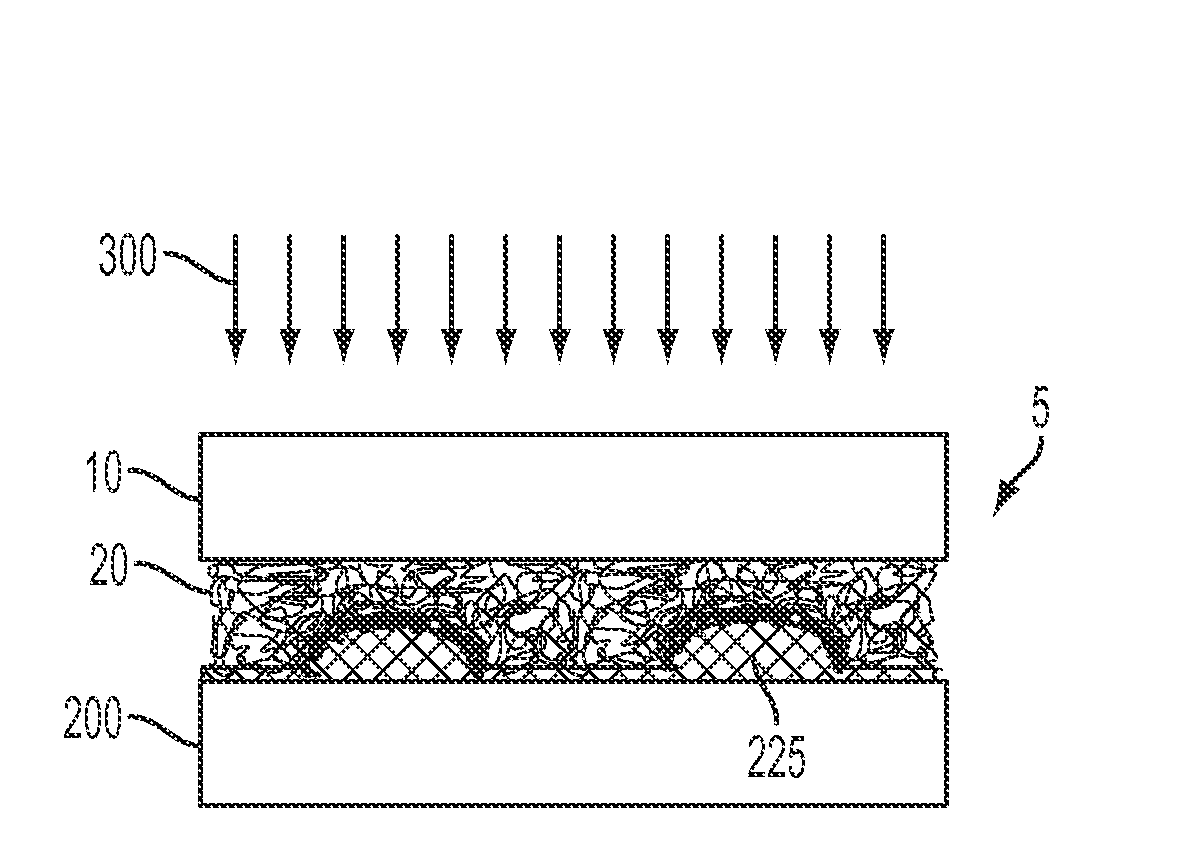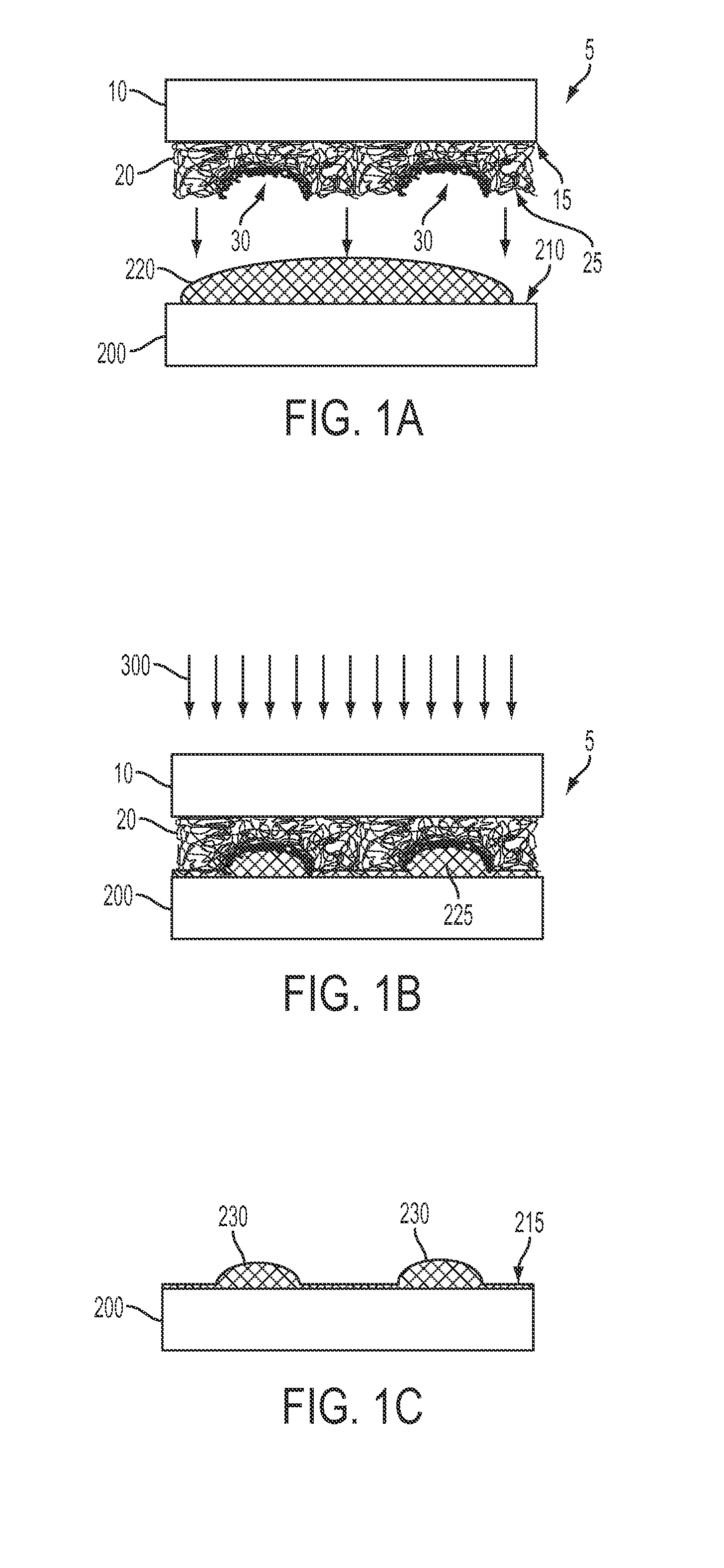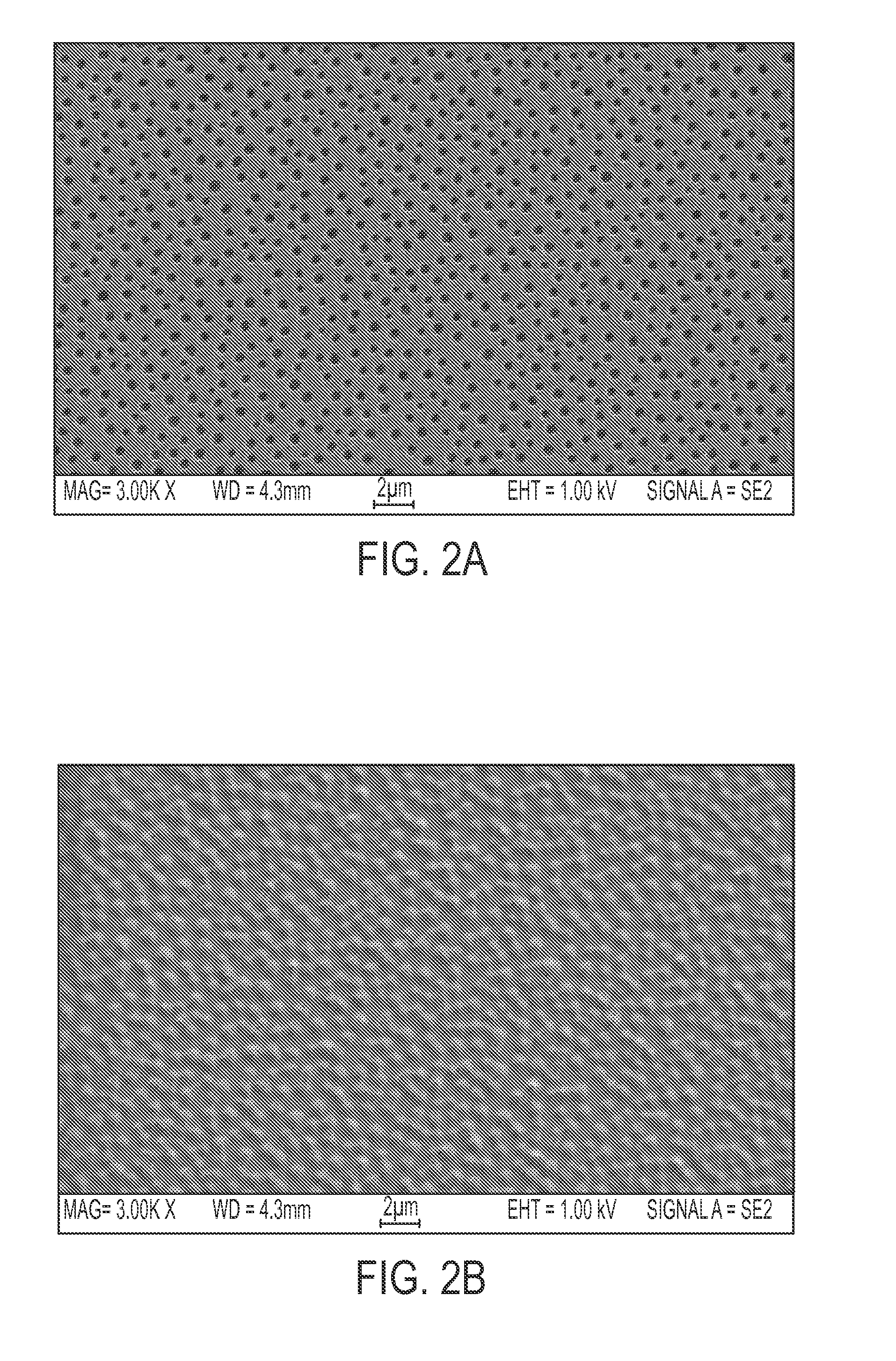Surface nanoreplication using polymer nanomasks
a polymer nanomask and surface technology, applied in the field of materials for and methods of masking surfaces and forming nanoscale threedimensional structures, to achieve the effect of reducing manufacturing costs and low production costs
- Summary
- Abstract
- Description
- Claims
- Application Information
AI Technical Summary
Benefits of technology
Problems solved by technology
Method used
Image
Examples
example 1
Polymer Materials
[0080]The polymer materials used in the nanomask fabrication process are listed in TABLE 1. These materials are purchased from polymer source, incorporation, Montreal, Canada. The abbreviation PS-b-PEO refers to a block copolymer of polystyrene and polyethylene oxide. The abbreviation PAA refers to poly(acrylic acid). All polymers were formed by living anionic polymerization. The number-average molecular weights for the PS-b-PEO block copolymers are provided in the form “X-b-Y,” where X refers to the contribution of polystyrene blocks to the molecular weights, Y refers to the contribution of polyethylene oxide blocks to the molecular weights, and X+Y refers to the total number-average molecular weight. For example, a number-average molecular weight of 105-b-3 refers to a PS-b-PEO block copolymer having a total number-average molecular weight of 108,000 Dalton, to which 105,000 Dalton is contributed by polystyrene blocks and 3,000 Dalton is contributed by polyethylen...
example 2
Polymer Solution
[0081]A polymer solution is prepared by mixing PS-b-PEO with PAA and dissolving the polymers in THF solution. Optionally, the samples may be heated to 60° C. to dissolve the polymer. The total polymer concentration is about 0.02 wt. % to about 4% wt. %, depending on the molecular weight of polymer and the desired film thickness. The polymer solution may then be filtered with a 0.2-μm syringe filter to be ready for deposition onto a glass surface.
example 3
Polymer Film
[0082]A 2-inch by 2-inch (5.08 cm×5.08 cm) glass substrate is washed with acetone and isopropyl alcohol before applying the polymer solution prepared in Example 2. The glass surface does not require any pretreatment for this quick self-assembling and oriented film process. The polymer nanomask film is prepared at a specific room temperature (25° C.±3° C.) by spin coating process at 1000 rpm to 3000 rpm with an acceleration of 200 rpm / s to 1000 rpm / s for a total time of about 40 seconds. Alternatively, dip coating may be used.
PUM
| Property | Measurement | Unit |
|---|---|---|
| pore diameter | aaaaa | aaaaa |
| heights | aaaaa | aaaaa |
| number-average molecular weight | aaaaa | aaaaa |
Abstract
Description
Claims
Application Information
 Login to View More
Login to View More - R&D
- Intellectual Property
- Life Sciences
- Materials
- Tech Scout
- Unparalleled Data Quality
- Higher Quality Content
- 60% Fewer Hallucinations
Browse by: Latest US Patents, China's latest patents, Technical Efficacy Thesaurus, Application Domain, Technology Topic, Popular Technical Reports.
© 2025 PatSnap. All rights reserved.Legal|Privacy policy|Modern Slavery Act Transparency Statement|Sitemap|About US| Contact US: help@patsnap.com



